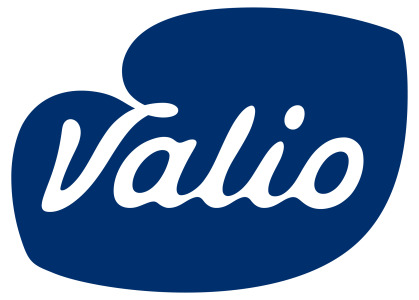News
Exploring different approaches to lactose-free dairy
17 May 2020Demand for lactose-free dairy is on the rise around the world, and manufacturers have several options available to them to tap into this growing trend.
Lactose intolerance is highly prevalent in Asian and African countries, where up to 95% of the population is affected, compared to fewer than 10% of Northern Europeans. Perhaps counterintuitively, demand for lactose-free dairy products tends to be highest in regions with the lowest prevalence of lactose intolerance, as dairy features more strongly in traditional dietary patterns – and lactose-free foods and drinks increasingly are perceived as beneficial for digestive health. However, as dairy demand rises in other parts of the world, so will demand for lactose-free varieties, presenting a major opportunity for dairy companies, as well as ingredient suppliers.

Even during the Covid-19 pandemic – as demand for standard dairy products has dropped and many producers have been left with surplus milk – global demand for lactose-free dairy has risen. In 2019, manufacturers of lactose-free milk and suppliers of lactase, the enzyme used to produce it, rose to record levels.
Using lactase remains the most common way to remove lactose from dairy products, and several major suppliers, including DSM, Novozymes and Chr Hansen, provide enzymes so manufacturers can create lactose-free dairy products and ingredients. Most recently, DuPont introduced a lactase enzyme optimised for faster processing times under different thermal conditions in both EMEA and North America.
However, other approaches are available, each with its own benefits and drawbacks for various product categories. Some companies supply lactose-free ingredients directly. The Finnish dairy giant Valio, for example, has a line of lactose-free milk powders for use in dairy foods and drinks, as well as in confectionery, baked goods and ready meals.
The enzymatic approach is simple, effective and cheap, and works by splitting the milk sugar into its constituent sugars, galactose and glucose. These individual sugars are sweeter than lactose, meaning that lactase has found a new lease of life in reduced sugar flavoured dairy products, as manufacturers can use it to reduce how much sugar they add.
But sweeter flavour is not always desirable, and GEA is among those suppliers offering alternative approaches. One option is to remove some of the lactose from the milk before adding the lactase, resulting in a sweetness profile closer to that of ordinary milk. The milk is skimmed and pasteurised before undergoing a filtration process to remove part of the lactose. Another approach is to use a filtration and separation process to split the milk into water, fat, protein, lactose, vitamins and minerals, before recombining it in the required proportions, leaving out the lactose.
Apart from lactose intolerance, demand for free-from foods and drinks is on the rise in general, including for their perceived digestive health benefits. Valio has suggested manufacturers could market lactose-free products as ‘easy on the stomach’, for example, to capitalise on this perception. However they are marketed, sales of lactose-free dairy have outpaced dairy sales in general in Western Europe, where they have grown an average of 6% a year from 2013 to 2017, according to Euromonitor International, while standard dairy sales remained flat.
Related news

US alternative egg brand cracks European market
23 Jun 2025
Just Egg is set to be produced in Europe’s largest plant-based facility as plant-based egg brands look to take advantage of the supply chain crisis.
Read more
World Food Safety Day shines a spotlight on science
19 Jun 2025
On 7 June, the World Health Organization (WHO) held its annual World Food Safety Day, highlighting the role scientific research and innovation play in supporting consumers’ health.
Read more
Compostable packaging claims rubbished by regulator
9 Jun 2025
Compostable coffee capsule ads from brands including Dualit and Lavazza Coffee have been banned after the UK’s advertising watchdog deemed them to be "misleading".
Read more
The winners of Vitafoods Europe Startup Challenge 2025 revealed
29 May 2025
Four startups – Yomio Drops, PFx Biotech, Revobiom, and Favamole – took top prizes at this year’s Vitafoods Europe Startup Challenge awards.
Read more
Plant-based proteins ‘have higher levels of chemical contaminants’ due to processing
21 May 2025
Plant-based proteins have higher levels of chemical contaminants than their animal-based counterparts, but there is no suggestion of “immediate risk” to consumers, say scientists.
Read more
Nestlé improves nutrition reporting as pressure grows on other food and beverage companies
16 May 2025
Nestlé has urged other major food manufacturing businesses to improve their reporting on the nutritional value of their products.
Read more
Grocery retail shows cautious optimism and stabilisation
15 May 2025
Health and functionality, personalisation, convenience, advancing technologies, and sustainability dominate the grocery retail landscape and the shoppers of the future.
Read more
East takes on West in the fight for future food flavours
30 Apr 2025
Asian and South American flavours are now key components on global menus, driven by a growing global appetite for culinary mashups.
Read more
How biotechnology is developing novel ingredients of the future
29 Apr 2025
Fermented ingredients have the potential to change the food sector at a more rapid pace than once thought, a report by global management consultancy McKinsey suggests.
Read more
Chinese consumers show strong interest in new plant milk types
28 Apr 2025
Chinese consumers are prioritising taste and health benefits when purchasing plant milks, with growing interest in ingredients such as nuts, grains, and tubers.
Read more


